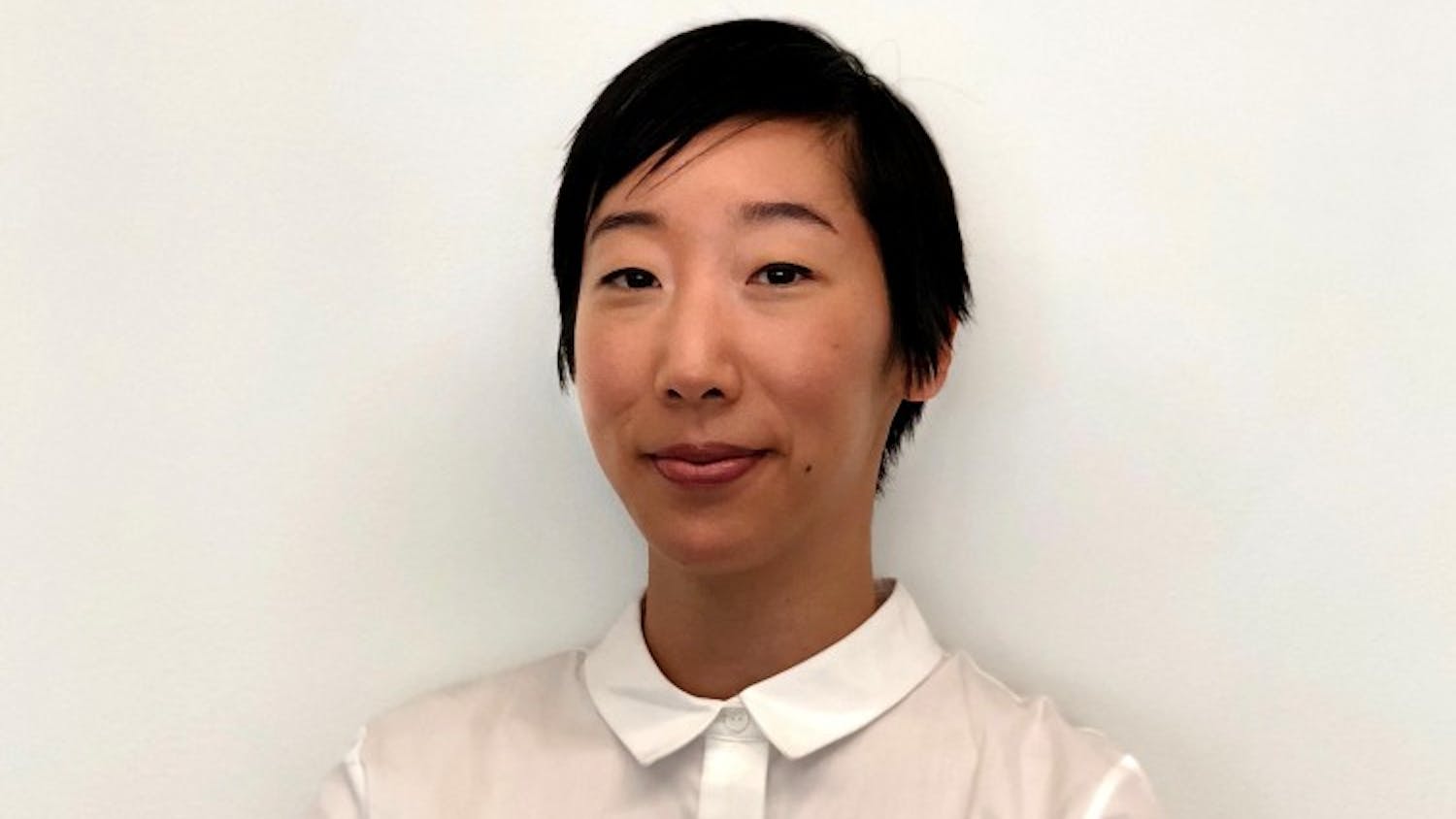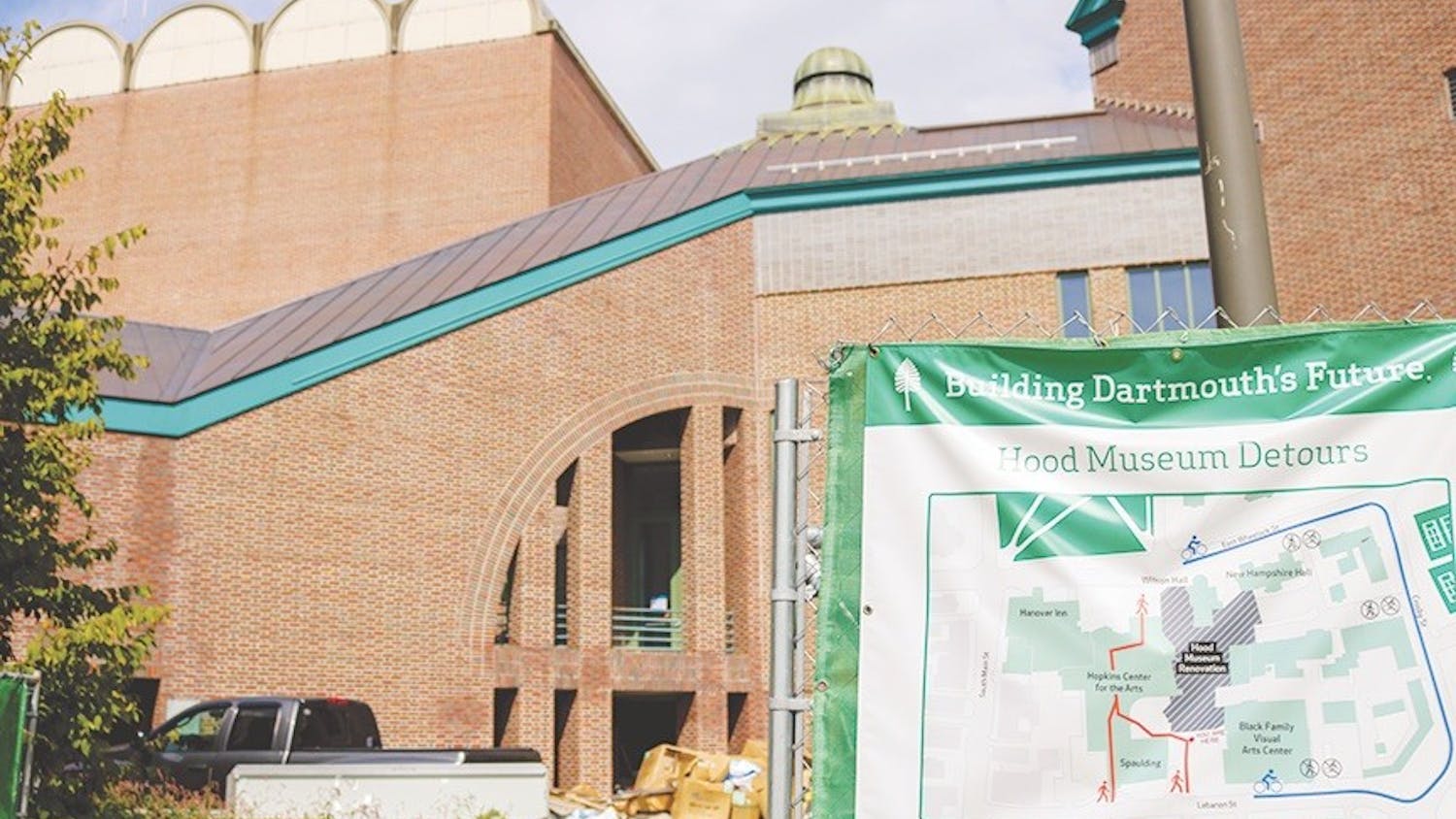Today, the Hood Museum of Art is holding a symposium entitled “Arts, Artists, and the Museum: A Conversation.” Considered the Hood’s second major re-opening event, it consists of discussions with a variety of artists who have work on display in the galleries, an open house and a reception in the evening.
“This is not a run-of-the-mill event,” Hood director John Stomberg said. “This is a very special and rare event that we’ve organized to celebrate the reopening of the Hood.”
The program begins in the Gilman Auditorium shortly before 9 a.m. and consists of four panels throughout the day. Students and community members are welcome to join for any or all of these sessions, titled “Global Contemporary,” “New Photographies,” “Painting Now” and “Art and Social Justice.”
“[The Symposium] is an obvious example [of] how involved the Hood is with the contemporary arts scene and actively coming up with new conversations and topics to discuss,” Hood intern Juliana Wheaton ’19 said.
After these panels, the public can explore the open galleries along with the artists and curators from 5 p.m. to 6 p.m. and then join them in the closing reception from 6 p.m. to 7 p.m. in the Russo Atrium.Each session will involve two to three artists, all boasting impressive resumes — Morehshin Allahyari, Bahar Behbahani, Markus Brunetti, Lalla Essaydi, Jeffrey Gibson, Jane Hammond, Sin-ying Ho, Cara Romero, Alison Saar and Hulleah Tsinhnahjinnie. Collectively, these artists represent the diversity of the different Hood collections and symposium topics.
“Students who are engaged in the art world might be intimidated by the fame and reputations of the artists, and yet one of the reasons why we selected this group is that they’re friendly and down to earth,” Stomberg said. “We’re literally going to walk through the museum with artists that we love and admire and have a conversation.”
The Hood’s associate curator of global contemporary art Jessica Hong, who is the moderator of the “Global Contemporary” session, which will focus on a global view of ideas, images and ideas that transcends political boundaries. For this panel in particular, Hong added that the artists’ perspectives will be especially crucial to the success of panel discussions.
The second and third panels are “New Photographies” and “Painting Now.” “New Photographies” will explore the techniques and skills of modern photography. “Painting Now” will look at balancing both innovation and tradition within an increasingly critical art world. These two sessions are being held so that the Hood to include so that the public can explicitly engage with both painting and photography — the two art mediums they are most likely to see on view in the Hood.
“Although we’re open to the public and people can walk through the galleries, it’s really important to have public engagement as a part of [the gallery experience], because oftentimes viewing [art] can be more of a passive experience,” Hong said.
According to Hong, the campus’ active engagement with the museum is central to the Hood Museum’s mission, as faculty members are encouraged to utilize the Hood in order to stimulate classes with tangible examples in an interactive, personal experience outside of a tradition classroom. The upcoming art symposium represents another avenue for this kind of outreach.
“It’s not just what we have, but what we do with what we have,” Stomberg said. “That’s what’s so important. Our engagement with teaching is unmatched.”
According to Stomberg, the different panel topics were chosen as part of an effort to be a “responsive” and “engaged” museum. For example, “Art and Social Justice,” the final panel of the symposium, will examine the past in order to better understand social issues and place their context in the present.
“There’s a kind of ethics of citizenship that influences us,” Stomberg said. “And so we try to be a museum that actually does take a position and we are interested in improving the world and we are interested in subjects such as social justice.”
Following the four panels in which these subjects will be discussed, there will be an open house in the galleries for symposium attendees. During the open house, attendees will have the opportunity to talk to the artist-panelists about not only their works on display, but also their opinions on other pieces within the same collections, according to Stomberg.
“[The artists] each have a unique perceptive and vantage point, but I think what ties them each together is this sensibility that they have,” Hong said. “I think that they inhabit the global sensibility as they embrace different forms of hybridity, encompassing different temporalities, cultures and traditions.”
Wheaton added that the open house is also a valuable opportunity to see art in a new light.
“I think having conversations with artists whose work is on view … [is] such a big opportunity to see [art] through [the artists’] eyes or see it through the perspective of its materiality, or the person’s story or their process that you might otherwise not know,” Wheaton said.



